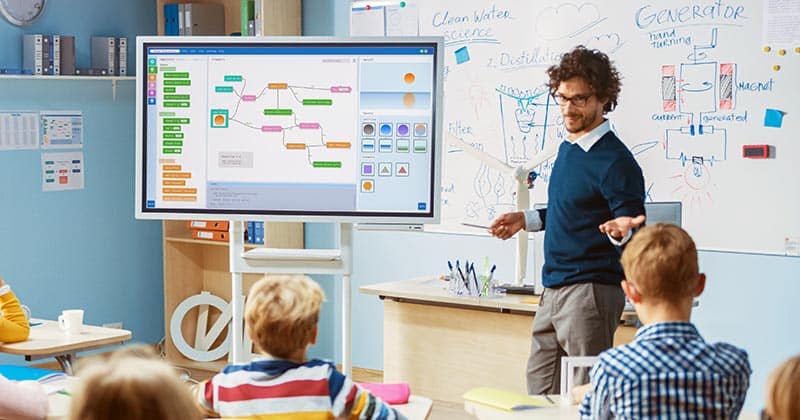Benefits of Technology in the Classroom
Technology has revolutionized various aspects of our lives, and education is no exception. In today’s digital age, incorporating technology in the classroom has become essential for effective teaching and learning. In this article, we will explore the numerous benefits of technology in the classroom and how it can enhance the educational experience for both students and teachers.
Enhanced Learning Opportunities
Integrating technology into the classroom opens up a world of enhanced learning opportunities. With access to the internet, students can explore a vast array of resources, including educational websites, online libraries, and multimedia content. This enables them to gather information, conduct research, and gain a deeper understanding of the subjects they are studying.
Improved Engagement and Interactivity
Technology in the classroom promotes active engagement and interactivity among students. Interactive learning tools such as educational apps, virtual simulations, and multimedia presentations make the learning process more dynamic and exciting. Students can actively participate in lessons, collaborate with their peers, and develop critical thinking and problem-solving skills.
Personalized Learning Experience
One of the significant advantages of technology in the classroom is the ability to cater to individual learning needs. With the help of educational software and adaptive learning platforms, teachers can personalize the learning experience for each student. This ensures that students can learn at their own pace, focus on areas where they need more support, and receive immediate feedback on their progress.
Enhanced Access to Information
Technology provides students with instant access to a vast amount of information. Gone are the days of relying solely on textbooks and limited resources. With the internet, students can explore up-to-date information, global perspectives, and diverse viewpoints. This exposure to a wide range of information fosters critical thinking, creativity, and a deeper understanding of the world around them.
Collaborative Learning and Communication
Technology facilitates collaborative learning and communication in the classroom. Students can collaborate on projects, share ideas, and work together on assignments using various digital tools and platforms. This encourages teamwork, communication skills, and the ability to work effectively in a digital and interconnected world.
Preparation for the Future
Incorporating technology in the classroom equips students with essential skills for the future. In today’s digitally-driven world, proficiency in technology is becoming increasingly important in various careers and industries. By integrating technology into their learning experience, students develop digital literacy, technological skills, and adaptability, preparing them for the demands of the modern workforce.

Technology has become an integral part of education, offering numerous benefits to both students and teachers. From enhanced learning opportunities and improved engagement to personalized learning experiences and preparation for the future, the advantages of technology in the classroom are undeniable. By embracing technology, educators can create a more dynamic and effective learning environment, empowering students to thrive in the digital age.
Frequently Asked Questions
1. How does technology enhance learning in the classroom?
Technology enhances learning in the classroom by providing interactive and engaging content, fostering collaboration among students, and allowing for personalized learning experiences.
2. What are the benefits of using educational apps in the classroom?
Educational apps help students grasp complex concepts easily, promote active learning, and provide instant feedback, making the learning process more efficient and effective.
3. How does technology promote student engagement?
Technology promotes student engagement by offering multimedia resources, interactive activities, and gamified learning experiences that capture students’ attention and make learning enjoyable.
4. What are the advantages of online research in the classroom?
Online research allows students to access a vast amount of information, develop critical thinking skills, and learn to evaluate and analyze sources, preparing them for the digital age.
5. How does technology support differentiated instruction?
Technology supports differentiated instruction by providing adaptive learning platforms, personalized feedback, and customized learning paths tailored to individual students’ needs and learning styles.
6. What are the benefits of using multimedia presentations in the classroom?
Using multimedia presentations in the classroom helps students visualize concepts, improves information retention, and enhances communication and presentation skills.
7. How does technology foster collaboration among students?
Technology fosters collaboration among students by enabling real-time communication, facilitating group projects through shared documents and platforms, and promoting peer feedback and collaboration.
8. What are the advantages of using educational videos in the classroom?
Educational videos provide visual and auditory stimulation, simplify complex topics, and cater to different learning preferences, making them valuable tools for enhancing understanding and knowledge retention.
9. How does technology prepare students for future careers?
Technology prepares students for future careers by equipping them with digital literacy skills, promoting problem-solving and critical thinking abilities, and exposing them to emerging technologies used in various industries.
10. What are the benefits of using online assessment tools in the classroom?
Online assessment tools offer immediate feedback, automate grading processes, and allow for data-driven insights into student performance, enabling teachers to provide targeted support and track progress effectively.




